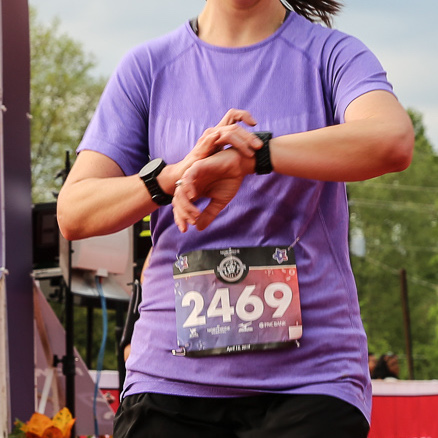So here’s something I wanted to bring to your attention. How often have you looked at your Garmin (or some form of GPS device) after a race and said?
- “I ran longer”
- “this race course was short”
- “My GPS says I ran xxx distance over the actual race”
Below is some helpful information, a combination of three different sources on the issue of GPS measurement. With regard to GPS tracking: race courses are measured using established protocols set by the IAAF (International Association of Athletics Foundation) and USATF (United States Track and Field) based on the principle of tangents. According to the IAAF course measurement guidelines (pg. 20), a road race course is defined by the shortest possible route a runner could take without being disqualified. Generally, a certified measurer with a measuring wheel:
- rides the course several times on a bike
- staying near the curb and taking every available tangent.
This ensures that all runners will run at least the declared race distance. If the device indicates a longer distance, this indicates:
- the distance taken to run around others participants
- hit a water stop
- or stay to the middle
- or outside lane
Advertising notwithstanding, while GPS devices are on most occasions very close to accurate, they are never truly accurate. The US Department of Defense (DoD) sets requirements for the minimum accuracy of all GPS systems and introduces random error into the output to civilian systems.
The civilian GPS position error in the horizontal plane, i.e., longitude and latitude, may be up to 328 feet (100 meters) from the true position.
- Clouds
- trees
- hills
- tall buildings
- radio emissions
- solar activity
The above mentioned will all affect readings, as will courses with a high number of turns due to recalibration issues. GPS devices are disallowed as course measurement devices by IAAF for all these reasons.
When we train, put the following into practice – “RTR” “Read the Road” for Tangents. It’s very important that you run smart and efficient.
What’s a
“tangent”? According to Webster (along with several math dictionaries), a
tangent is a line that touches a curve at one point without cutting
across it. Below are several examples of tangents. Think about your
running routes and our training, we ran “straight” lines where
appropriate, keeping safety first at all times.
When you’re racing your event on Saturday, read the road and
mind the tangents, run the “straight” lines for efficiency.
And remember, every finish line is the beginning of a new race.

